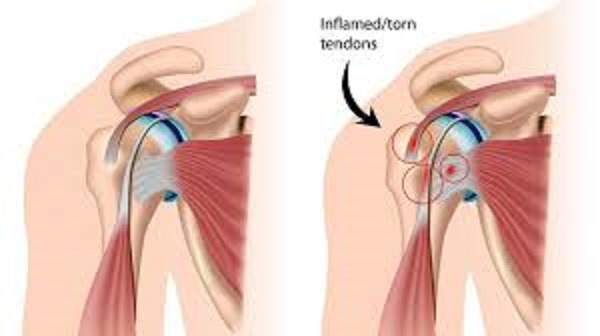1. What is shoulder tendinopathy?
Shoulder tendinopathy is an injury caused to the shoulder tendons. This can result in pain and swelling and therefore difficulty in moving the shoulders. It can be in the form of inflammation of the tendons or tears in the tendon without inflammation. The tendons in the shoulder are attached to the rotator cuff muscles enabling movement. When this is affected, movement is restricted. This injury may be chronic or acute and is mainly because of overuse of the shoulder.
2.What are the causes of shoulder tendinopathy?
The main reason for tendinopathy is the repeated use of the shoulder. The rotator cuff is the place where tendon injury happens. This is because it is the place that facilitates circular motion in your arm. This condition can be primarily seen in sports like baseball and volleyball players. Tendinopathy can also be due to arthritis, trauma to the shoulder like a fall on outstretched arms, use of hands overhead repeatedly like people using overhead pressing machines, and normal wear and tear associated with age.
3.What are the symptoms of shoulder tendinopathy?
The following are some of the common signs of tendinopathy.
- Pain in the front part of the shoulder
- Pain reaching to the back of the shoulder
- Pain at night when sleeping on the injured side.
- Shoulder stiffness and weakness
- Loss of range of motion
- Clicking sound while raising the arm
- Pain while lifting the shoulder above the head
- Pain while using the arm
4.What are the types of tendinopathy in the shoulder?
There are two types of tendinopathy of the shoulder. They are:
Tendonitis: When there is an overuse and inflammation of the tendons, tendonitis occurs. The pain in this case is immediate and acute. This condition can be easily treated and the damage caused is also not permanent.
Tendinosis: This condition happens when there is degeneration of the tendons and tears begin to appear. This is due to chronic overuse or sudden force leading to an overload of tendons. This injury is more severe than tendonitis. The inflammation begins as tendonitis and slowly develops into tendinosis when untreated.
5.What are the treatment methods for shoulder tendinopathy?
One of the main ways is to stop the root cause leading to tendinopathy. The healing time will be more if the activities causing inflammation are continued. There are both surgical and non-surgical treatments for shoulder tendinopathy.
a. Non-surgical treatment
To begin with, doctors start with non-surgical methods to reduce pain and inflammation.
- Rest is the first thing advised to reduce pain
- Apply ice packs for 20 minutes at a time, many times a day to reduce swelling
- Apply heat to reduce stiffness
- NSAIDs or non-steroidal anti-inflammatory drugs to reduce pain and swelling
- Steroidal injections like cortisone to reduce pain
- Physical therapy that involves stretching exercises to restore range of motion
b.Surgical treatment
The doctor performs arthroscopic surgery if non-surgical methods fail to provide relief. Here, the surgeon inserts a camera called the arthroscope into the shoulder joint and performs the surgery.

